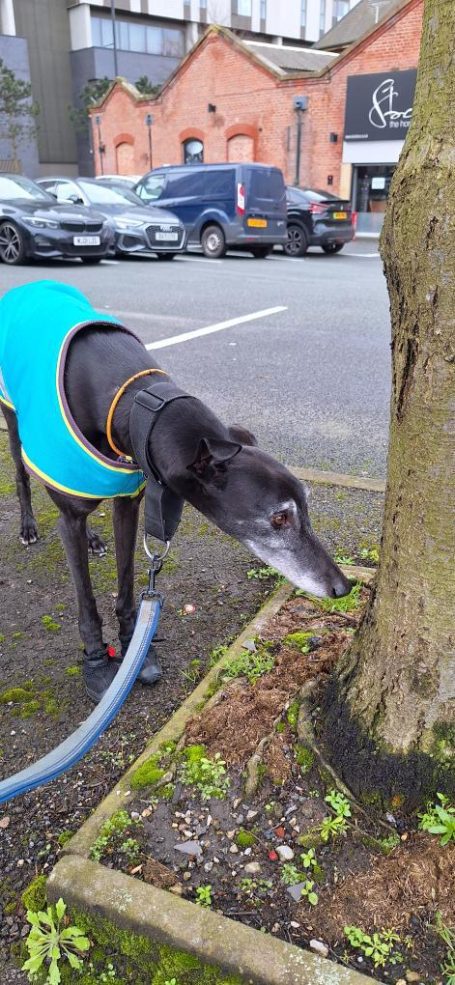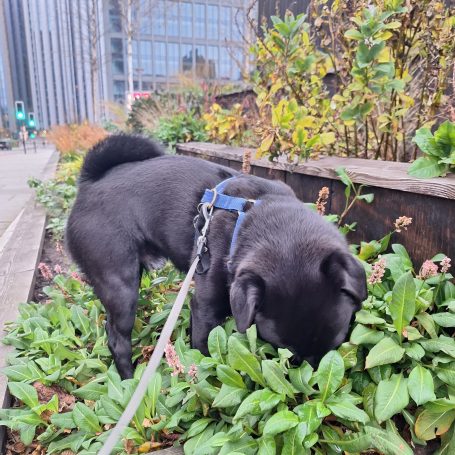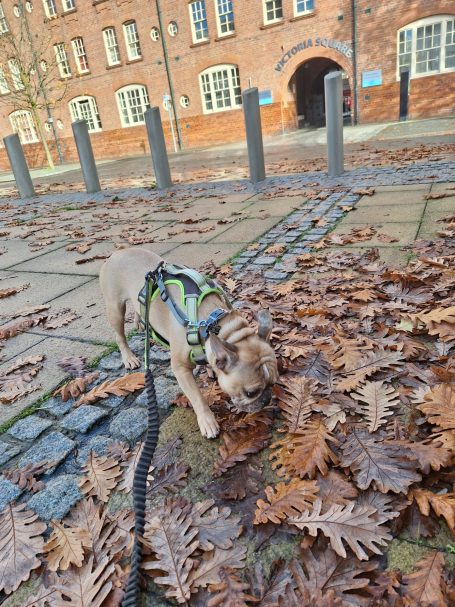16/03/2024
Olfaction
Let's talk about olfaction!
A dog's sense of smell, or olfaction, is thought to be 10,000 to 100,000 times stronger than that of humans'. They have more than 220 million olfactory receptors, compared to our 6 million! [1]
This impressive ability is what makes dogs amazing at various roles; medical alert assistance dogs, biodetection dogs (assisting the early diagnosis of various diseases), conservation detection dogs, police sniffer dogs, search-and-rescue dogs and many more impressive roles.
Sniffing can also benefit our dogs. It has been found that dogs who sniff more intensly, have a lower pulse rate, even if they are active/walking. This suggests sniffing is relaxing for dogs [2].
When dogs sniff, the Seeking system in the brain is activated and dopamine is released. Increased levels of this "feel good" neurotransmitter are associated with increased attention and motivation [3]. Dopamine also helps to enhance memory and learning and plays a role in regulating emotional responses [4, 5, 6]. Studies have shown sniffing to make dogs feel more optimistic, an essential activity for anxious dogs especially [7].
So not only is a dog's sense of smell incredibly impressive and useful to society; the opportunity to sniff has numerable benefits for the individual too!
Some ideas for how can we encourage sniffing:
- Take your time on walks, letting them take in all the smells and communicative "pee mail".
- Use a long/relaxed leash or follow your dog, so they have the space to explore and follow where their nose takes them.
- Using foraging games, where food or toys are hidden for your dog to sniff out.
- For a challenge, you can teach them scent-work and reward them for finding a specific scent (a useful idea could be teaching them to find your keys, wallet or phone!).
- Offer enriching, soothing scents (in safe concentrations), such as lavander, valerian, chamomile.
By engaging their sense of smell, you are on your way to creating a happy, relaxed and, likely, a more "well-behaved" companion. [8]
Written by FOUR P4WS team member Jess, behaviour consultant of HeartHounds.co.uk
References:
[1] Jenkins, E. K., DeChant, M. T., & Perry, E. B. (2018). When The Nose Doesn’t Know: Canine olfactory function associated with health, management and potential links to microbiota. Frontiers in Veterinary Science, 5, 56.
[2] Budzinski, A., & Budzinski, C. (2022, January 12). Conference for the foundation Psia Wachta. https://www.dogfieldstudy.com/en/study/pulse-study-at-the-heart-of-the-walk
[3] Gadbois, S., & Reeve, C. (2014). Canine olfaction: Scent, Sign and Situation. In Domestic Dog Cognition and Behavior: The scientific study of Canis familiaris (pp. 3-29). Berlin, Heidelberg: Springer Berlin Heidelberg.
[4] Mills, D., & Ledger, R. (2001). The effects of oral selegiline hydrochloride on learning and training in the dog: A psychobiological interpretation. Progress in Neuro-Psychopharmacology and Biological Psychiatry, 25(8), 1597-1613.
[5] Riva, J., Bondiolotti, G., Michelazzi, M., Verga, M., & Carenzi, C. (2008). Anxiety related behavioural disorders and neurotransmitters in dogs. Applied Animal Behaviour Science, 114(1-2), 168-181.
[6] Wright, H. F., Mills, D. S., & Pollux, P. M. (2012). Behavioural and physiological correlates of impulsivity in the domestic dog (Canis familiaris). Physiology and Behaviour, 105(3), 676-682.
[7] Duranton, C., & Horowitz, A. (2019). Let me sniff! Nosework induces positive judgment bias in pet dogs. Applied Animal Behaviour Science, 211, 61-66.
[8] Johnstone, G. (2012, June 25). Why You Should Let Your Dog Sniff On Their Walk. The Spruce Pets. https://www.thesprucepets.com/why-dogs-like-to-sniff-4687196#:~:text=The%20mental%20enrichment%20your%20dog,mischievous%20behavior%20when%20at%20home.
We need your consent to load the translations
We use a third-party service to translate the website content that may collect data about your activity. Please review the details in the privacy policy and accept the service to view the translations.







